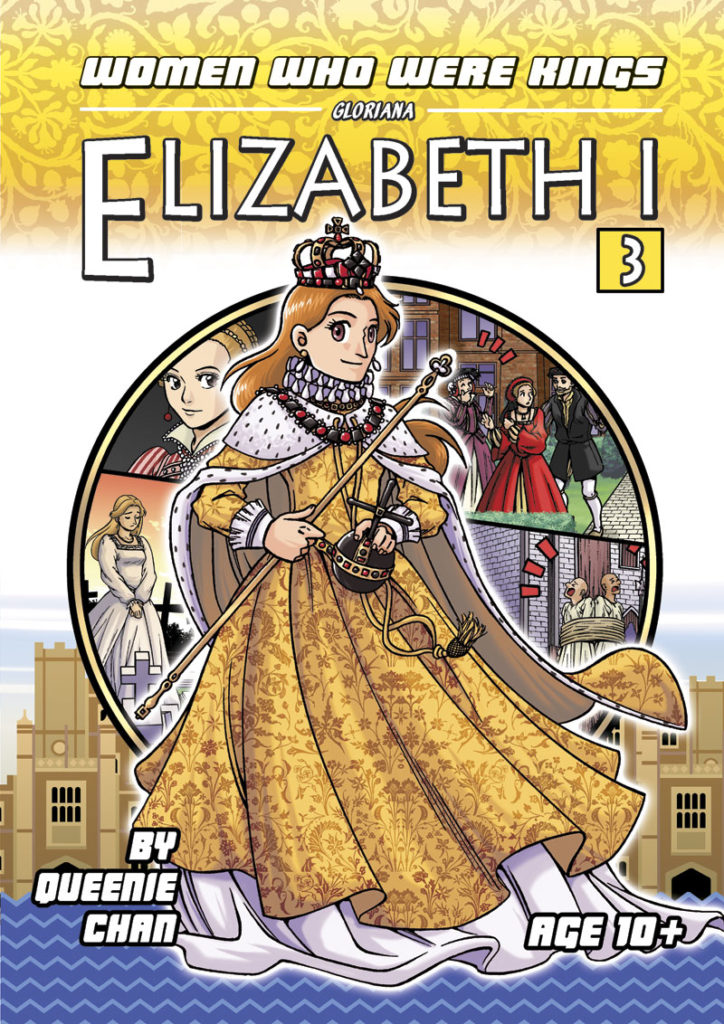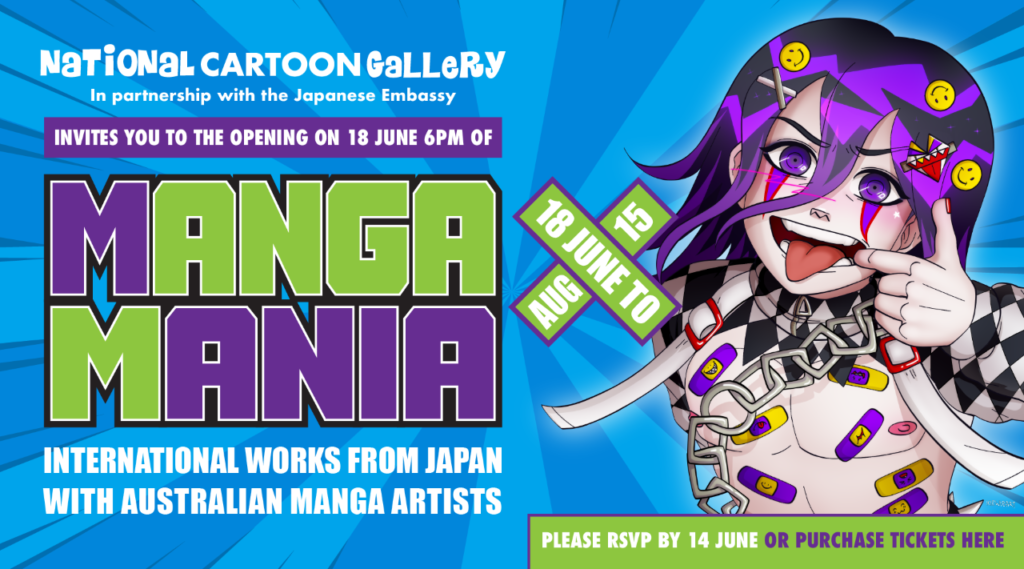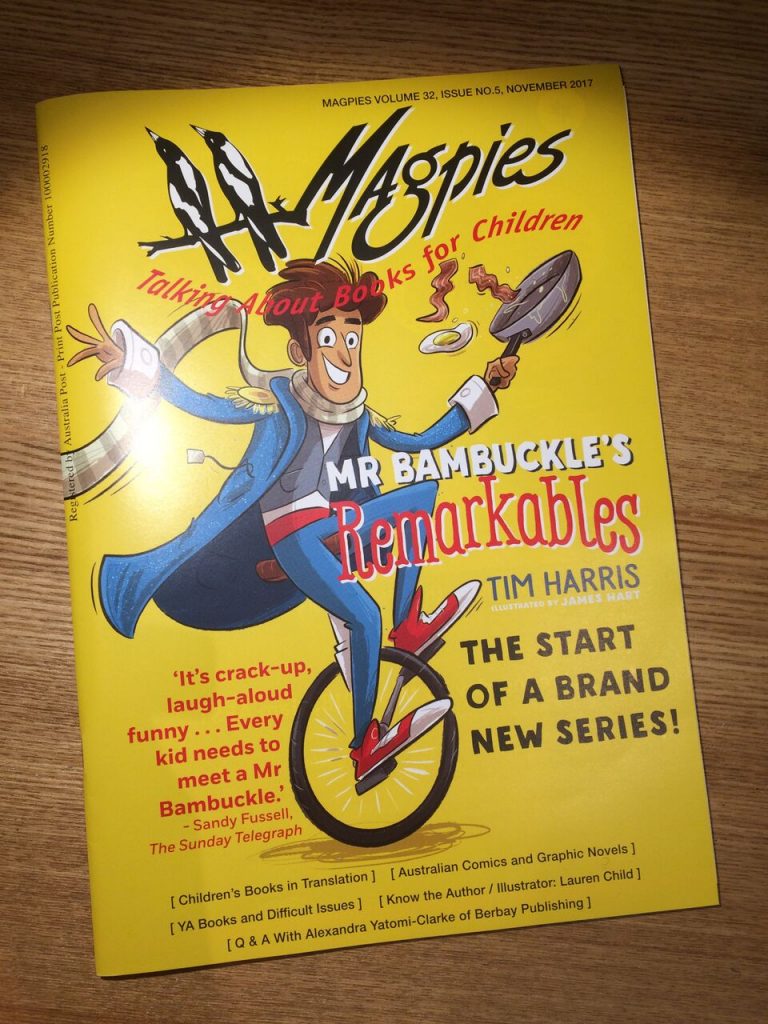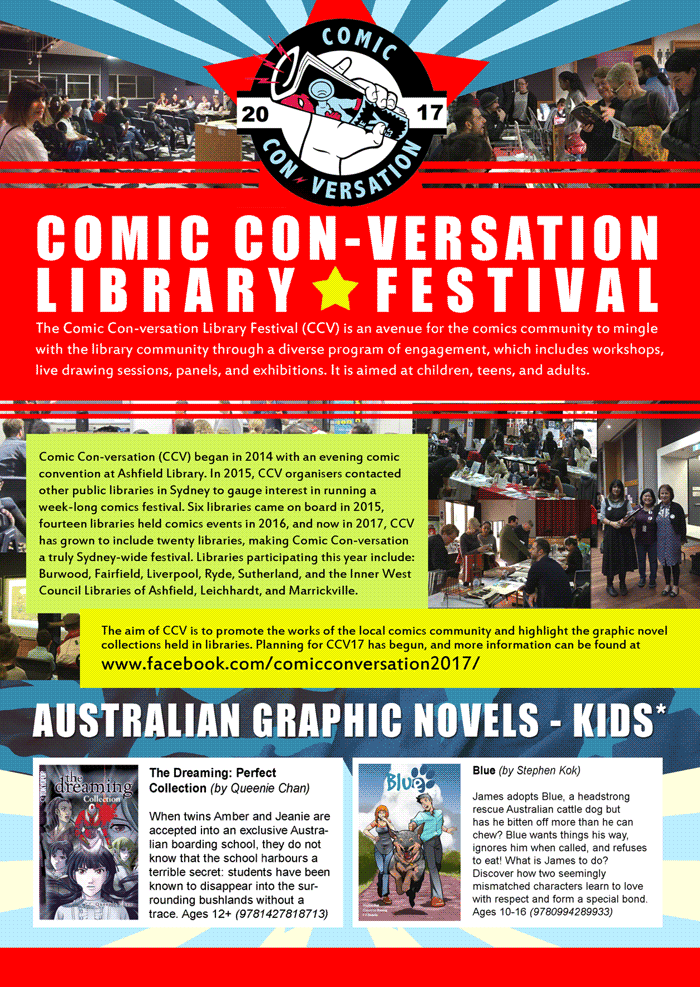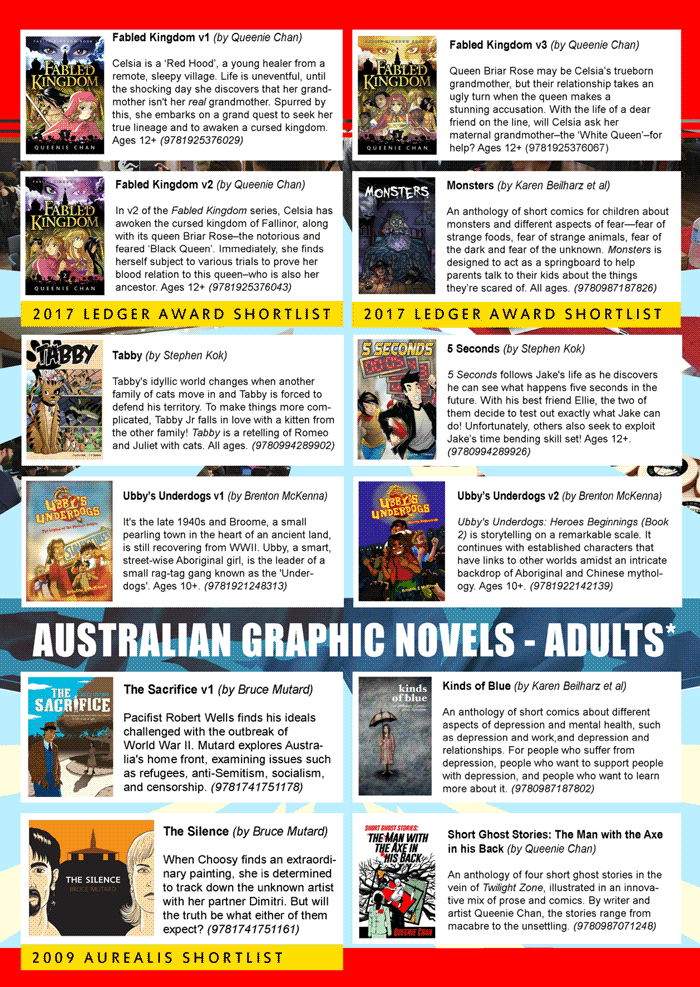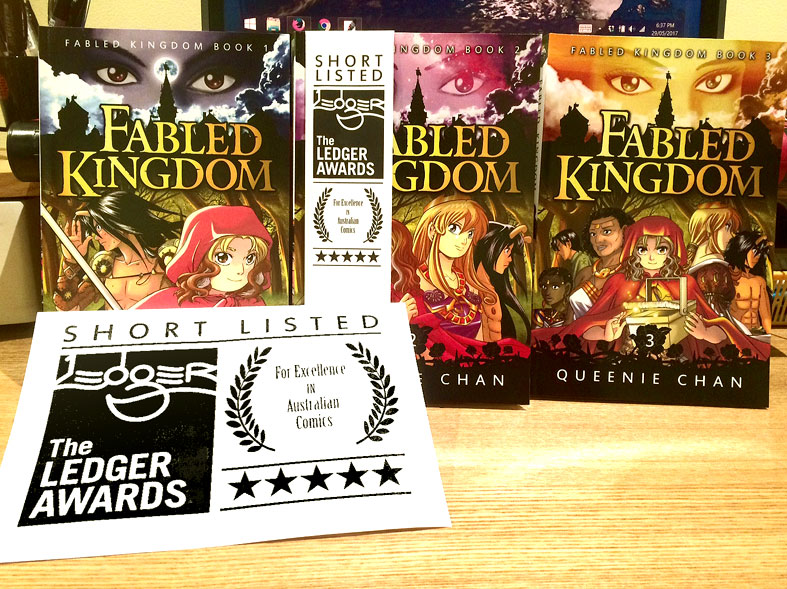I recently had an interview with Ervin and Nico at the Youtube channel “Shining Otaku”. It brought back the old days of my pioneering work on “The Dreaming” with TOKYOPOP, as part of the original wave of the so-called “Original English Language” (OEL) manga that was a hallmark of TOKYOPOP’s original manga program. See the video below for the interview.
The term “OEL” was always a problematic term because it excluded non-English speaking global manga artists. However, a bigger problem is that the term became popularised, and then acquired a toxic connotation due to what happened to TOKYOPOP in 2008 and after. Despite this, when the interview brought up the term “OEL v2”, I started wondering if the next generation of non-Japanese manga artists can reclaim the term and use it proudly as a badge of honour.
Since the rise and fall of the TOKYOPOP OEL movement, there has been a new generation of manga artists from around the world who are amazing artists and storytellers (many are interviewed on “Shining Otaku”). Sadly, they don’t have a single banner to unite under, though that can always change.
Instead, due to a lack of print publishing venues, many of them have gone on to create webcomics for Webtoons and Tapas. This is not in itself a problem, but it is something that troubles me, because the same issues of creator exploitation and low pay plague these publishers much like they did back in the days of TOKYOPOP. Only now, they seem worse.
The Problem with Webtoons VS Traditional Print Manga
I’m currently doing a PhD at Macquarie University, and part of my dissertation is on Capitalism, Webtoons and Creative Labour. While I don’t have a problem with Webtoons existing as a platform, and I laud it for its ease of use and accessibility, I can’t argue that it’s a good place for creator rights. Nor are artists properly compensated on it for all the work they do, even as options for payment exist via advertising and Patreon–neither of which involve money paid directly from Webtoons.
In fact, all the research I’ve done on it only highlights the difficult situation of the creative labourer in a globalised digital economy. And this trend only seems to worsen, as the online scene becomes over-saturated with free-to-read manga/comics material, which has the overarching effect of driving artist earnings down across the board.
Thanks to the ease and popularity of the Webtoon free-to-read model, this “produce work for free on Webtoons and hope to get picked up as a paid author” approach has been the dominant mode of publishing for many younger western manga artists. After TOKYOPOP crashed and burned after 2008, the western manga dream seems to have shifted from print-book sales to online views–which unfortunately has become something of a disappointment when it came to financial returns, since earning decent money on Webtoons remains a dubious proposition.
As far as I can tell, while there are certainly success stories, earnings via Patreon and advertising can vary wildly from month to month–assuming you can even get readers who are willing to donate to you. Artists can’t get paid decently via Patreon if your readers don’t care to support you, and earning through advertising is very inconsistent, due to the popularity of ad-blockers and the differing pay rates depending on the region of the world your readers are from (boy, I have a lot to say about how advertising pays on Webtoons, none of it nice).
I would never tell anyone to not publish on Webtoons, so long as they’re aware of the risks and have a sound level of expectations. However, recent events in Japanese manga-publishing has seen the Webtoon model shakened, and I’m not so certain about recommending Webtoons as the dominant platform for young artists anymore.
Big Japanese Manga Publishers Hit Back
While Webtoons has been conquering the online manga sphere for the past 2 decades, the big four Japanese manga publishers have been playing catch-up. Initially slow to take to the free-to-read online model, the big Japanese publishers prefer to make the bulk of their money through print volume sales (print magazine sales have long been a loss leader), and seem to want to keep it that way. Part of the reason is the desire to keep production and distribution chains for physical books intact in Japan, although the gradual rise of e-manga sales since 2014 as a portion of total manga sales may have pushed them to adapt. Still, there have always been smaller Japanese publishers who experimented with the free-to-read online model since the start of the internet, though it wasn’t until recently that the manga industry have hit back hard with a new model via the Jump magazine online off-shoot Shounen Jump+ (launched in 2013).
One may think that free-to-read manga doesn’t exactly galvanise print or ebook sales, but Jump+ has proven that to be false. This has been made blatant by the recent massive print volume sales of series such as “Spy x Family”, “Kaiju No. 8”, and “DanDanDan”–all free-to-read manga on Jump+–only one of which has an anime adaptation at this point. This not only proves that free-to-read online manga can sell actual manga print volumes (and e-manga), it proves more than that: the opening week sales of the Jump+ series (hundreds of thousands) utterly outsells that of newer series from the Shounen Jump print magazine (mere tens of thousands). Conventional wisdom isn’t just dead–it has been completely overturned.
(That’s not to mention the 500,000+ sales of “Takopii’s Original Sin“, a 2-volume manga that under the previous model would have sunk without a trace. Instead, it became a viral internet sensation that caused actual volumes to fly off actual shelves.)
All My Predictions From a Decade Ago Was Wrong
This news shook me, because it shows that the publishing wisdom of “e-books are the future”–a common refrain from 2011–have not come to pass. Now that we’re all a decade older, e-book sales have steadied as a percentage of total sales and print books are still around, and Lord knows, print books is and always have been where the money is (at least outside of Japan and Korea, which have cultures of e-manga consumption possibly due to limited space in people’s houses. In the US & Europe, e-comic sales barely top 10%, though data for China is missing).
I stand gob-smacked at all the things I’ve gotten wrong. A decade ago in 2011, I lamented that the old school Japanese publishers are not tech-savvy, and will fall far behind and lose their readers to the Korean Webtoon tech mavens. Five years ago in 2017, I praised western manga artists who jumped onto the Webtoon band-wagon with their full-coloured stories produced in the Webtoon vertical-scrolling format (which unfortunately makes it difficult to re-format for print), thinking that it was the way of the future.
Now in 2022, it’s been proven in cold, hard cash that print is far from dead. The Japanese publishers weren’t wrong in moving at a glacial pace–it may be that as book publishers, they understand that what really sells books is not speed in heading to the market, but good, timeless stories that people will still want to read decades later. Case in point: “Dragon Ball” is available to rent on Jump+, despite that series ending in 1995. There are many people alive today paying to read “Dragon Ball” despite being born years after the series’ original run, but more importantly, it proves that there are now many ways to e-monetise an existing manga that weren’t possible before. “Dragon Ball” still sells print volumes, but it also sells e-manga, and money from e-rentals also count. Previously, publishers weren’t able to profit the manga rental market, but now they can with the internet.
More than that, encouraging fledgling young artists to go onto Webtoons might have been a mistake. While there have certainly been success stories on Webtoons, they are hardly the norm–it would seem that those with the first mover advantage in Webtoons netted most of the benefits back in 2015, and anyone joining Webtoons in 2022 are probably struggling to be seen. Webtoons are also usually in colour and formatted in a way that ill-suits a printed book, two things that makes the “web to print” plan difficult (or even “web to e-comic”–the current Amazon Comixology reader still requires a page-by-page layout). Patreon and advertising money also haven’t panned out as hoped, due to over-saturation and the ease of anyone uploading their own work–though Webtoon needn’t worry, as they have an infinite supply of wannabe artists who will replace anyone who drops out.
There’s not much to conclude from this semi-long spiel, except that the battle for the future of being a paid manga artist is far from settled. What was conventional wisdom in 2011 is no longer wise in 2022, so I loathe to make any more predictions. There is much to be said on this subject, and I hope to place everything relevant from my PhD online once it’s completed in May 2024.
Edit (20th July 2022): Well, seems that Webtoons caught on faster than I did! In this piece of news from Publishing Weekly, “Wattpad Webtoon Launches Print Graphic Novel Imprint” will see Webtoon launching a new graphic novel imprint called Webtoon Unscrolled that will start publishing in September 2022! Now I have to update my PhD on Webtoons yet again!

